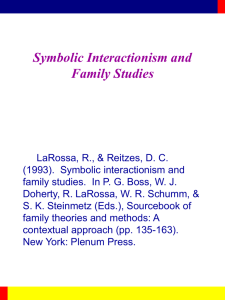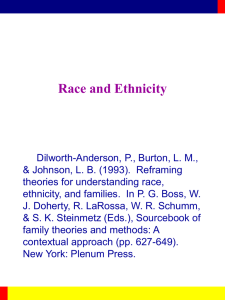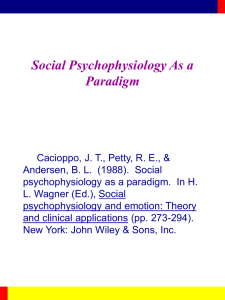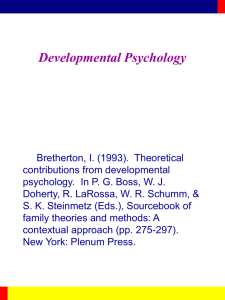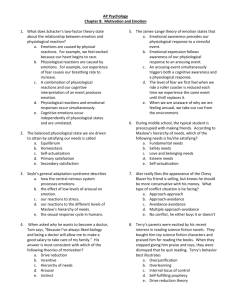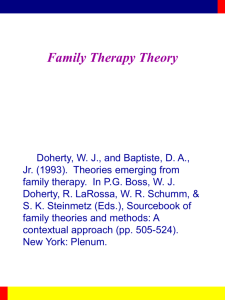Gottman’s Social- Psychophysiological Research Protocol
advertisement
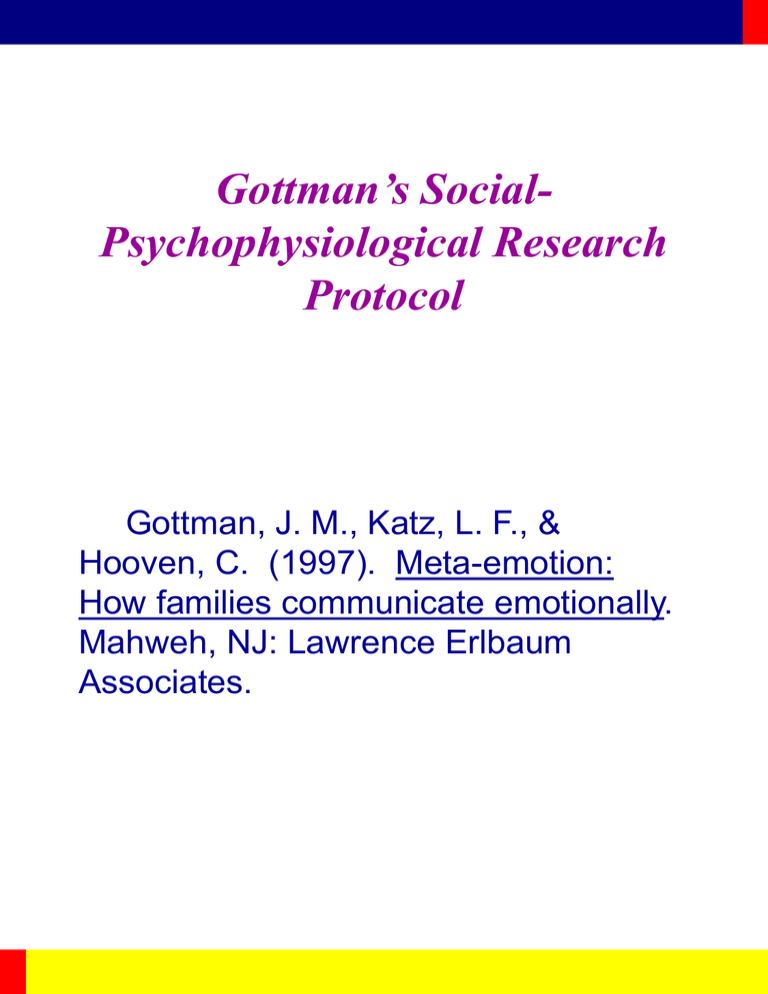
Gottman’s SocialPsychophysiological Research Protocol Gottman, J. M., Katz, L. F., & Hooven, C. (1997). Meta-emotion: How families communicate emotionally. Mahweh, NJ: Lawrence Erlbaum Associates. Introduction In Gottman’s protocol, participants complete self-report instruments, participate in a semi-structured interview that investigates attitudes about emotions, and discuss topics of conflict in a laboratory setting. The laboratory interactions are videotaped and physiological arousal is measured. Dr. Ronald J. Werner-Wilson Semi-Structured Interview The emotion interview is based on the semi-structured meta-emotion interview developed by Dr. John Gottman and his colleagues. It measures participants’ experience of sadness; experience of anger; philosophy of emotional expression and control; parents’ feelings, attitudes, and responses to their child’s anger and sadness. Dr. Ronald J. Werner-Wilson Observational Measures of Marital Interaction Participants are videotaped having a lowconflict conversation and a high-conflict conversation. Three dimensions of marital interaction are measured: Rapid Couple Interaction Scoring System. The Rapid Couple Interaction Scoring System (RCISS) is a coding system that identifies problem-solving behavior using a checklist to code behaviors of speaker and listener for each spoken turn. Specific Affect Coding System. The Specific Affect Coding System (SPAFF) is a rating system that relies on coders to evaluate verbal content, voice tone, context, facial expression, and nonverbal body language to assess expressed affect. Emotional Facial Action Coding System. The Emotional Facial Action Coding System (EMFACS) assesses emotional expressions and non-emotional expressions that are used to control facial expressions. Dr. Ronald J. Werner-Wilson Physiological Measurement During each of the laboratory interactions, three aspects of physiological arousal are measured for each participant: (a) heart rate, (b) skin conductance, and (c) respiration. These physiological variables provide information about level of physiological arousal and parasympathetic functioning of the participant. Dr. Ronald J. Werner-Wilson

